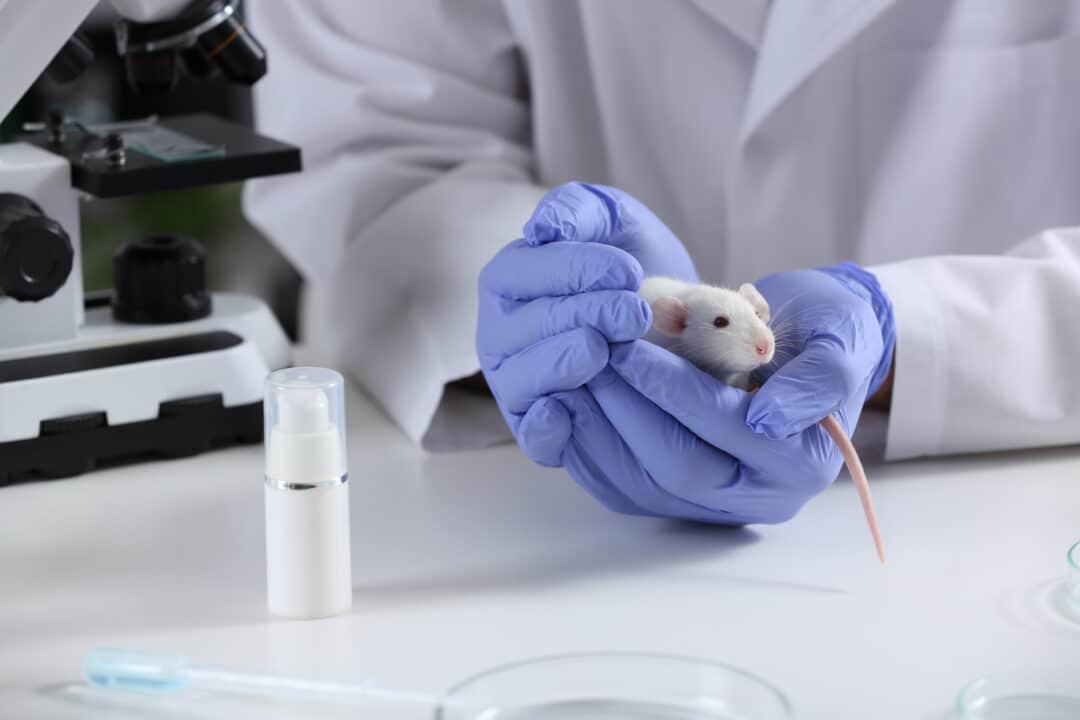Welcome Chirpers to a space of awareness and compassion. Today, I want to look into the somber realm of beauty experiments, where innocence meets industry. I will focus on unveiling the myriad of animals that, behind laboratory doors, endure testing for the sake of cosmetics.
I will try to highlight the realities endured by these creatures, forging a path to informed choices and a more conscious approach to beauty. Join me, as we advocate for a world where beauty is not only skin-deep but kindhearted and just for all living beings.
Understanding Cosmetics Testing: Which Animals Are Being Tested?
In the world of cosmetics testing, a variety of animals find themselves subject to cosmetic experiments that assess the safety and efficacy of beauty products. Historically, tested animals like rabbits, guinea pigs, mice, and rats have been at the center of this controversy. These creatures, each sensitive and sentient in their own right, have endured procedures in the name of tested cosmetic components and formulas. It’s essential to ask ourselves, what animals, specifically, are maneuvered through the rigors of animal testing?
Rodents are customarily the go-to species, but tests have unfortunately extended beyond these, affecting fish and birds as well. The repeated emphasis on animal testing is not without challenge—alternative testing methods have gained momentum, ensuring safety testing without animal cruelty.
Below is the list (not exhaustive) that I have compiled over sometime:
| Animal | Common Use in Experiments | Reasons |
|---|---|---|
| Rabbits | Draize eye and skin irritation tests | Often used due to their docile nature and large eyes |
| Guinea pigs | Skin allergy tests | Their skin shows allergic reactions similar to humans |
| Mice | Toxicity tests, skin tests | Genetically modified to assess different reactions |
| Rats | Toxicity tests, carcinogenicity tests | Chosen for their size and ease of handling |
| Dogs | Long-term toxicity tests | Beagles are commonly used due to their size and temperament |
| Cats | Rarely used, sometimes in neurological testing | Not as common due to public opposition and affection for pets |
| Monkeys | Toxicity tests, biological research | Share physiological similarities with humans |
| Fish | Environmental toxicity tests | Used to study the effects of chemicals on aquatic life |
| Birds | Toxicity and behavioral testing | Canaries and pigeons are sometimes used |
| Frogs | Skin irritation and toxicity tests | Amphibian skin can absorb chemicals, indicating reactions |
| Hamsters | Inhalation tests, skin tests | Their cheek pouches are used for testing carcinogens |
| Llamas | Antibody response testing | Unique immune system useful for medical research |
| Horses | Rarely, for hormone and vaccine testing | Size and cost make them less common |
| Pigs | Skin tests, as their skin is similar to humans | Increasingly used as an alternative to smaller rodents |
| Sheep | Rarely, for sunscreen testing | Wool can be used for testing irritants |
| Goats | Rarely, often in medical rather than cosmetic testing | Their milk is sometimes used for testing skin products |
| Cows | Rarely, mostly in biomedical research | Bovine serum is used in a variety of laboratory tests |
| Primates | Various tests, including toxicity and biological | Ethical concerns greatly limit their use |
| Ferrets | Rarely, in toxicity testing | Sometimes used in toxicity inhalation |
The cosmetic industry is gradually shifting towards non-animal tests that not only refine these processes but also ensure the integrity of cruelty-free products. Science has forged paths to mimic skin and eye irritation in non-animal methods, which stand as a testament to the progress in alternative testing methodologies. Yet despite the advancement in methods, we cannot overlook the fact that animal tests still persist in certain sectors of the beauty products industry.
FAQs
What is the animal cruelty in the makeup industry?
Oh, where do I begin, my fellow beauty lovers? Animal cruelty in the makeup industry is a heart-wrenching issue that’s been hiding in plain sight for far too long. It’s all about these innocent animals—bunnies, guinea pigs, and so many others—being used in labs to test new beauty products.
They often undergo painful tests for skin and eye irritation or are forced to swallow chemicals to see if there’s any toxicity.
The sad truth is that these little creatures don’t get to live the cozy life they deserve. Instead, they’re confined to small cages, living a life of fear and discomfort, all for the sake of a new lipstick shade or a foundation formula. It’s a stark contrast to the glamorous images we see in ads, right?
Why is lipstick tested on animals?
It’s a practice that’s as outdated as it is cruel. The reason? Well, companies often test lipsticks on animals to ensure the product won’t cause any adverse reactions in humans, like skin irritation or allergic responses.
How many beauty brands test on animals?
According to a survey among the 50 largest cosmetic brands in the world, 88% of them are not cruelty-free. This means that almost 9 of the 10 largest cosmetic brands test on animals themselves or have them tested by third parties.”
Final Thoughts!
What’s important for us, the conscious beauty lovers, is to stay informed and support those brands that align with our values. Look for certifications like Leaping Bunny, PETA’s Beauty Without Bunnies, or choose brands that are transparent about their cruelty-free practices. Every time we pick a cruelty-free product off the shelf, we’re making a statement and influencing the industry to do better. So let’s keep spreading the love and beauty without compromise! There you go.

